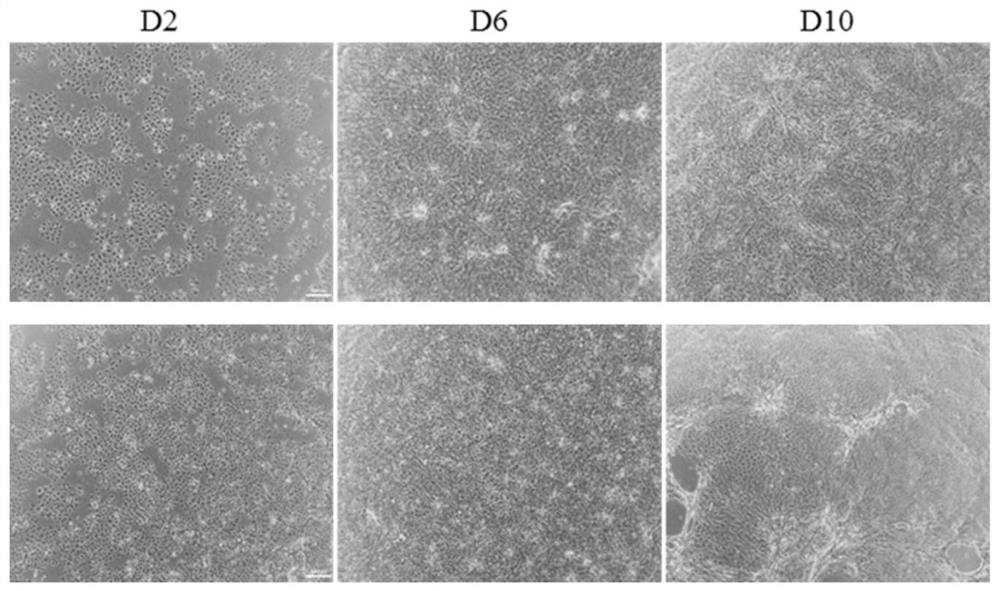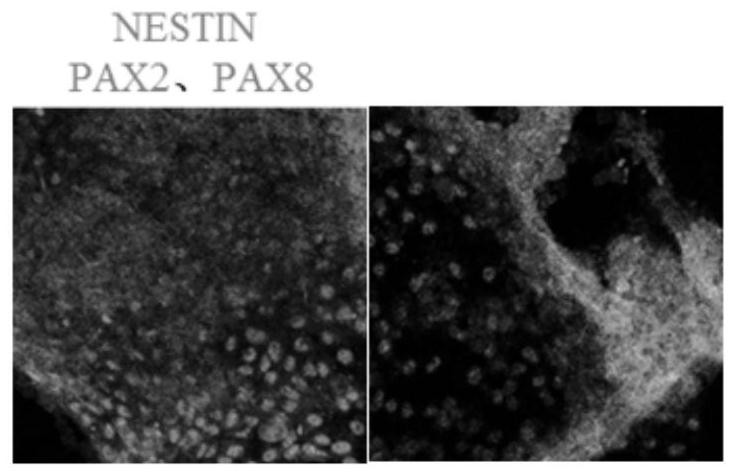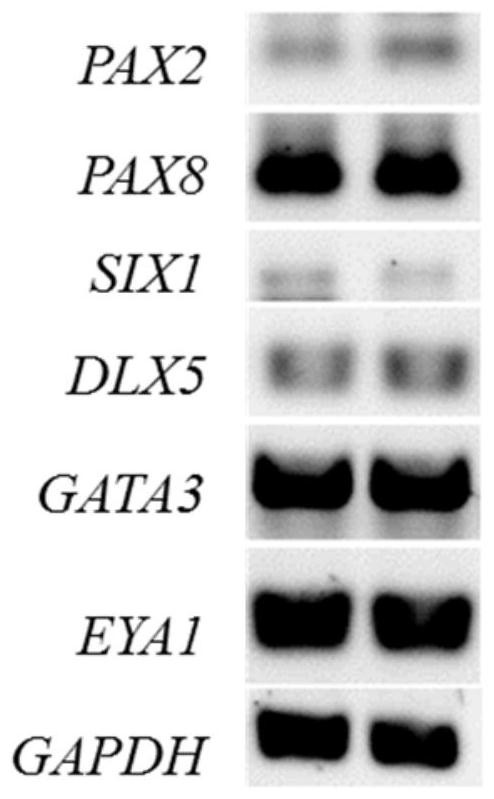Method for directionally differentiating induced multipotent stem cells into inner ear hair cell-like cells
A technology of inner ear hair cells and pluripotent stem cells, applied in the field of biomedicine
- Summary
- Abstract
- Description
- Claims
- Application Information
AI Technical Summary
Problems solved by technology
Method used
Image
Examples
Embodiment 1
[0033] Example 1 Directed differentiation of induced pluripotent stem cells into inner ear progenitor cells
[0034] (1) Induced pluripotent stem cells with good growth were cultured normally, digested into single cells with Accutase, diluted with DMEM / F12 (1:1) medium, centrifuged at 300g for 5min, resuspended and counted. According to 5μg / cm 2Laminin diluted with PBS was added to a 12-well plate, and the solution was discarded after standing at 37°C for 2 hours. Laminin-coated 12-well plates were inoculated with 1×10 4 The cells were cultured with the progenitor cell medium supplemented with Y-27632 at a final concentration of 10 μmol / L for 2 days, and then the medium was changed every other day for co-culture for 12 days. The progenitor cell medium is 1% N2supplement, 2% B27 supplement, 0.2% Normocin (500×) and 1mmol / L acetone added to the DMEM / F12 (1:1) medium by volume sodium nitrate, FGF3 at 50ng / mL, FGF10 at 50ng / mL.
[0035] (2) Extract the total RNA from inner ear...
Embodiment 2
[0037] Example 2 Directed differentiation of inner ear progenitor cells into inner ear hair cell-like cells
[0038] (1) Take eggs fertilized for 18.5 days, take out the chicken embryo in a sterile environment, separate the utricle of the chicken embryo through stereoscopic dissection, digest the utricle with thermophilic protease solution for 30 minutes, and then digest it with 0.25% trypsin after the digestion is terminated After 5 minutes, the digestion was stopped, and the mixture was removed with a 200-mesh sieve, centrifuged at 300g for 5 minutes, and the cells were resuspended in the growth medium and inoculated into a single culture dish, which was recorded as P0 generation cells. P0 generation chicken embryo utricle cells were cultured until the confluence reached 90%, and P1 generation cells were obtained. Repeated culture and passage until P3 generation cells were obtained. Chicken embryo utricle cells were added with mitomycin at a final concentration of 2 μg / mL C ...
PUM
 Login to View More
Login to View More Abstract
Description
Claims
Application Information
 Login to View More
Login to View More - R&D Engineer
- R&D Manager
- IP Professional
- Industry Leading Data Capabilities
- Powerful AI technology
- Patent DNA Extraction
Browse by: Latest US Patents, China's latest patents, Technical Efficacy Thesaurus, Application Domain, Technology Topic, Popular Technical Reports.
© 2024 PatSnap. All rights reserved.Legal|Privacy policy|Modern Slavery Act Transparency Statement|Sitemap|About US| Contact US: help@patsnap.com










